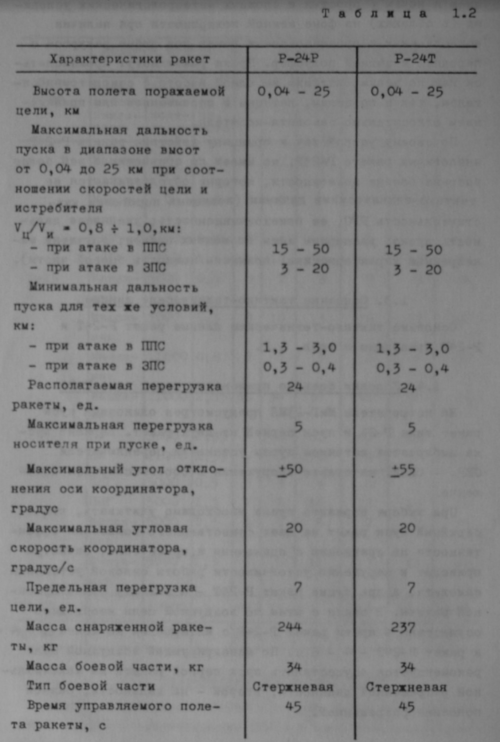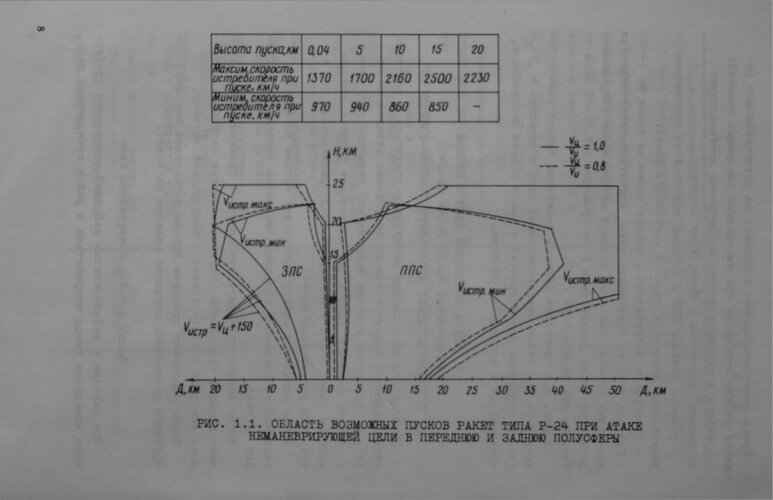- Joined
- 2 January 2006
- Messages
- 3,816
- Reaction score
- 5,013
flanker said:MOAR PYLONS!
Sorry, but I did not get Your point ???
flanker said:MOAR PYLONS!


Hello Comrades,
I am curious about R-23T and R-24T missile since they are a BVR capable weapon that is retrofitted with Infrared Seeker instead of the Radar Seeker. Do you comrades got any idea what is the maximum lock range for the R-23T and R-24T IR seeker head both at rear and front aspect?
I found this stuff here on the last page but what does PMG and PPS and also ZPS means?
View attachment 655585

which manual is this sirHello Comrades,
I am curious about R-23T and R-24T missile since they are a BVR capable weapon that is retrofitted with Infrared Seeker instead of the Radar Seeker. Do you comrades got any idea what is the maximum lock range for the R-23T and R-24T IR seeker head both at rear and front aspect?
I found this stuff here on the last page but what does PMG and PPS and also ZPS means?
View attachment 655585
I believe PPS is the range in pursuit mode / rear aspect and ZPS is frontal..
View attachment 655628
Vise versa) Which can be seen from ranges (those are not engagement ranges but seeker lock ranges).I believe PPS is the range in pursuit mode / rear aspect and ZPS is frontal..
PMG is for полетный малый газ meaning flight idle.PMG is obviously relating to the engine mode of the F-16 target, my guess would be not afterburner, maybe Mil thrust?
which manual is this sirHello Comrades,
I am curious about R-23T and R-24T missile since they are a BVR capable weapon that is retrofitted with Infrared Seeker instead of the Radar Seeker. Do you comrades got any idea what is the maximum lock range for the R-23T and R-24T IR seeker head both at rear and front aspect?
I found this stuff here on the last page but what does PMG and PPS and also ZPS means?
View attachment 655585
I believe PPS is the range in pursuit mode / rear aspect and ZPS is frontal..
View attachment 655628
When the RGS-23 seeker achieves lock-on, the misille switches to the proportional navigation guidance after 0.5sec.
Okay (I thought it was the K-24), anyway are there any photographs or other information out there?You mean the K-25.



| Target type | Engine operation mode | Flight altitude (m) | Flight speed (Mach) | Heading angle 0 | Heading angle 15 | Heading angle 30 | Heading angle 60 | Heading angle 90 | Heading angle 180 |
| F-15 | Maximum | 0 | 0.8 | 5 | 7 | 8 | 9 | 10 | 35 |
| F-15 | Maximum | 0 | 1.0 | 6 | 7 | 8 | 10 | 11 | 40 |
| F-15 | Cruise? | 5000 | 0.5 | 3 | 4 | 4 | 5 | 6 | 26 |
| F-15 | Cruise? | 5000 | 1.3 | 9 | 10 | 12 | 14 | 15 | 38 |
| F-15 | Maximum | 5000 | 0.5 | 3 | 7 | 8 | 9 | 9 | 32 |
| F-15 | Maximum | 5000 | 1.3 | 9 | 10 | 13 | 16 | 17 | 50 |
| F-15 | Maximum | 11000 | 0.8 | 2 | 4 | 5 | 6 | 6 | 30 |
| F-15 | Maximum | 11000 | 2.35 | 30 | 34 | 37 | 46 | 50 | 90 |
| F-15 | Afterburner | 5000 | 2.35 | - | 60 | 80 | 90 | 90 | >90 |
| F-15 | Afterburner | 11000 | 2.35 | - | 50 | 70 | 80 | 90 | >90 |
| F-16 | Cruise? | 5000 | 0.5 | 3 | 3 | 4 | 5 | 5 | 25 |
| F-16 | Cruise? | 5000 | 1.3 | 7 | 7 | 10 | 12 | 13 | 33 |
| F-16 | Maximum | 5000 | 0.5 | 3 | 5 | 6 | 7 | 7 | 30 |
| F-16 | Maximum | 5000 | 1.3 | 7 | 9 | 11 | 13 | 13 | 45 |
| SR-71 | - | 20000 | 3 | 49 | 78 | 101 | 118 | 123 | >100 |
| Iroquois | - | 0 | - | 1.9 | - | - | - | 2.6 | 1.9 |
| Characteristics | R-24R | R-24T |
| Target flight altitude, km | 0.04-25 | 0.04-25 |
| Maximum launch range in the altitude range from 0.04 to 25 km with the ratio of target and fighter speeds -0.8 + 1.0 (km) in front hemisphere | 15-50 | 15-50 |
| in rear hemisphere | 3-20 | 3-20 |
| Minimum launch range for those conditions, (km) in front hemisphere | 1.5-5 | 1.5-5 |
| in rear hemisphere | 0.3-0.4 | 0.3-0.4 |
| Available overload of the rocket, G | 24 | 24 |
| Maximum overload of the carrier at launch, G | 5 | 5 |
| Maximum seeker deflection angle, deg | +-50 | +-55 |
| Maximum angular velocity of the seeker, deg / s | 20 | 20 |
| Maximum target overload, G | 7 | 7 |
| Missile equipped mass, kg | 244 | 257 |
| Warhead weight, kg | 34 | 34 |
| Warhead type | Continuous Rod | Continuous Rod |
| Time of controlled missile flight, s | 45 | 45 |

| BSV | BSV-DN | SMV | MV | |
| Flight altitude of the fighter, km | Above 1.5 | Above 1.5 | Below 1.5 | Below 1.5 |
| Antenna position with respect to the horizon | Up | Down | Up | Down |
can you provide the to the document.From this document:
What's your source for R-60 being PbSe? R-60 was uncooled PbS I believe, and R-60M cooled.
My guess is nitrogen-cooled PbS for R-23T and probably R-24T too. The head-on capability of R-24T is very limited in range except against Mach 2+ targets in full afterburner.
With the target in full afterburner, going fast and hot. The cooled PbS seeker is still reliant on detecting hotter elements. If it was an InSb seeker like R-73, with much better range against cooler elements, it wouldn't be so variable in range over different angles.Polish R-23 manual claims that the seeker lock range from the front was around 3 km
R60/60M maintenance manual. It also jives with the Peltier cooling, and the relatively low cooling temp that it provides in this case since PbSe doesn't need to be cooled down much for improved performance. The Russians used PbSe far more extensively for IR purposes than the west that favored InSb for those use cases.What's your source for R-60 being PbSe? R-60 was uncooled PbS I believe, and R-60M cooled.
My guess is nitrogen-cooled PbS for R-23T and probably R-24T too. The head-on capability of R-24T is very limited in range except against Mach 2+ targets in full afterburner.

